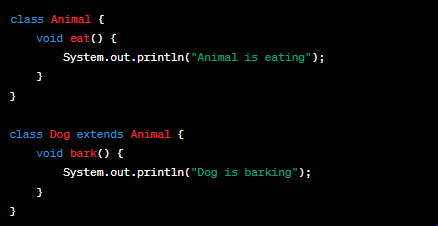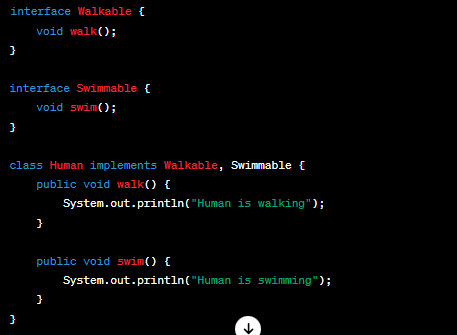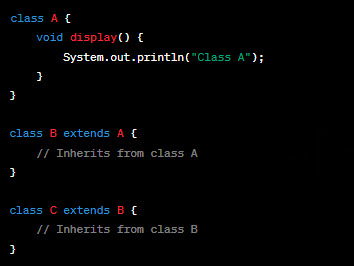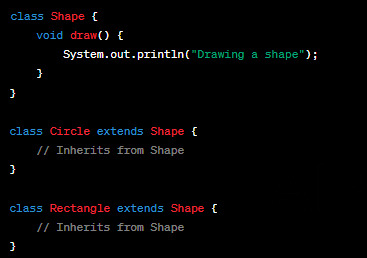#Learn Java
Explore tagged Tumblr posts
Text
Best IT Training Institute Jalandhar, Punjab
TechCadd is the best IT training institute in Jalandhar, offering expert-led courses in AI, Data Science, MEAN, MERN, and more.Enhance your skills and career prospects.

visit now: https://techcadd.com/best-java-course-in-jalandhar.php
#Java#Java Programming#Learn Java#Java Course#Java Tutorial#Java for Beginners#Java Programming Language#Java Basics#Java Training#Java Development#🧠 Skill Level Specific#Java Intermediate#Advanced Java#Object Oriented Programming Java#💻 Tech-Focused#OOP in Java#Java IDE#Eclipse Java#IntelliJ Java#Java Code Examples#Java Syntax#Java Projects#🔍 Topic-Specific Tags#Java Variables#Java Loops#Java Functions#Java Classes and Objects#Inheritance in Java#Java Exceptions#Java Collections
0 notes
Text

Programming Certification | Batch Starting 19th July 2025
Ready to start your coding journey? Join SunBeam's Core Java Certification Course and learn the skills that top IT companies demand!
🔍 Course Highlights:
✔ Java Language Features ✔ OOP Concepts (Class, Object, Instance, etc.) ✔ Inheritance & Polymorphism ✔ Exception Handling ✔ Multithreading ✔ Collection Framework ✔ File Handling & Reflection ✔ Functional Programming ✔ Real-world Applications
👨🏫 Trainer: Rohan Parmane 🎓 Instructor-led Online Training
🎯 Why Choose SunBeam?
✅ Expert-led sessions ✅ Real-time project practice ✅ SunBeam Certification ✅ post-course support ✅ 20% Group Discount (Team of 5 – Limited Time!)
0 notes
Text
Java vs Python: Which One Should You Learn? Compare their features, benefits, and career opportunities to choose the right programming language for you.
0 notes
Text
#Learn Java#Java course#Java developer#Java script#Java certification#Java ide#Java programming#Java tutor#Jms#Jdk#Java online course#Java development kit#Java developer course#Learn Java programming#Java certification course#Java coding#Java jdk#Learn Java online#Java for beginners
0 notes
Text
Welcome to the CACMS Institute, your gateway to excellence in Java programming
In today's fast-paced, ever-changing world of technology, there is an unprecedented demand for experienced programmers. As organisations increasingly rely on software solutions, learning a programming language like Java can help you launch a successful career in technology. CACMS Institute is committed to providing superior Java programming instruction, ensuring that our students are fully prepared to face real-world difficulties with confidence.
Why Choose CACMS Institute for Java Training?
1. Expert Instructors
CACMS' faculty includes skilled individuals with vast experiences in software development and Java programming. They contribute practical insights and industry-relevant knowledge to the classroom, providing assistance that extends beyond standard textbook study. Our instructors are enthusiastic about teaching and dedicated to assisting each student in reaching their full potential.
2. Practical Training
We believe that practicing programming is the most effective approach to learn it. Our curriculum emphasizes hands-on training, allowing students to engage on real-world projects and exercises that reflect actual realities. This practical experience provides our students with the tools they need to flourish in their future employment by teaching them how to apply theoretical principles in real-world settings.
3. Adjustable timings
Recognising that many of our students have busy schedules, CACMS provides flexible scheduling choices for our Java training programs. We provide classes that will accommodate your schedule, whether you are a full-time student, a working professional, or someone looking to improve your skills. This flexibility allows you to learn at your own speed without jeopardising other commitments.
4. Curriculum based on the industry
Our Java programming classes are designed to be consistent with industry norms and trends. Our curriculum is continually updated to reflect the most recent software development technologies and processes. Students will gain knowledge of fundamental topics such as object-oriented programming, data structures, algorithms, and advanced frameworks such as Spring and Hibernate.
Student-Centric Approach
CACMS takes pride in its student-centric approach to education. We recognise that each student has distinct learning requirements, and we endeavor to give individualized assistance. Our small class sizes encourage collaborative learning, allowing students to successfully engage with teachers and classmates.
Join CACMS Institute today!
Starting your path to become a skilled Java programmer has never been easier. CACMS Institute is committed to providing you with the knowledge, skills, and assistance you need to succeed in the technology business. Whether you're just starting out or want to improve your existing skills, our Java training classes are tailored to your specific needs.
Do not pass up the potential to change your future. Join us at CACMS Institute, the best Java training institute in Amritsar. Experience hands-on training, flexible scheduling, and an industry-relevant curriculum that will prepare you for success.
For further information or to enroll, please call +91 8288040281 or visit our website, http://cacms.in/basic-and-advanced-java/ Begin your journey to a lucrative career in Java programming today!
#cacms institute#cacms#techeducation#techskills#java training institute in Amritsar#Java peogramming#Learn Java#Java Training Course
0 notes
Text
Collections In Java Interview Questions and Answers
Prepare for your next Java interview with our comprehensive guide on Collections in Java⚡️. This post covers essential interview questions and detailed answers about Java's collection framework. From lists and sets to maps and queues, we explore the core concepts, usage, and differences between various collection types. Each question is accompanied by practical examples and explanations to help you grasp key concepts and perform confidently in interviews. Ideal for Java developers looking to sharpen their skills and ace their interviews.⬇️🔥🔥
➡️CLICK HERE TO VIEW

0 notes
Text
Best Java Learning Platform
Unlock the power of Java with our specialized learning platform designed for enthusiasts and aspiring developers. Dive into our Java courses that cover fundamental principles, advanced concepts, and practical applications. Whether you are a novice or an experienced coder, our platform provides a structured and engaging environment to enhance your Java programming skills. Join our community of learners and immerse yourself in hands-on projects, gaining the expertise needed for real-world Java development. Empower your coding journey with our Java learning platform and stay ahead in the dynamic world of software development.
0 notes
Text
Understanding Inheritance in Java: Exploring Types and Examples

In the world of Java programming, inheritance is a powerful concept that allows developers to create a relationship between classes, fostering code reuse and organization. In this blog, we'll delve into what inheritance is in Java, explore its types, and provide practical examples to make it all crystal clear.
What is Inheritance in Java?
Inheritance is a key pillar of Object-Oriented Programming (OOP), enabling a class to inherit properties and behaviors from another class. The class granting the inheritance is known as the superclass or parent class, and the class receiving the inheritance is the subclass or child class. This mechanism promotes the reuse of code and establishes a hierarchy among classes.
Types of Inheritance in Java:
1. Single Inheritance:
In single inheritance, a subclass inherits from only one superclass. Let's illustrate this with a simple example:

Here, Dog is the subclass inheriting from the Animal superclass. The Dog class can access the eat() method from the Animal class.
2. Multiple Inheritance (Through Interfaces):
Java doesn't support multiple inheritance for classes, but it does support it through interfaces. Consider the following:

Here, the Human class implements both the Walkable and Swimmable interfaces, achieving a form of multiple inheritance.
3. Multilevel Inheritance:
In multilevel inheritance, a class inherits from another class, and then another class inherits from the second class, forming a chain. Let's see an example:

In this scenario, C inherits from B, and B inherits from A.
4. Hierarchical Inheritance:
In hierarchical inheritance, multiple classes inherit from a single superclass, creating a hierarchy. Consider the following:

Here, both Circle and Rectangle inherit from the Shape superclass.
Benefits of Inheritance:
Code Reusability: Inheritance allows you to reuse code from existing classes, minimizing redundancy.
Method Overriding: Subclasses can provide specific implementations for methods inherited from the superclass.
Polymorphism: Objects of the subclass can be treated as objects of the superclass, enhancing flexibility.
Modularity: Inheritance aids in creating modular and easily understandable code by organizing classes into a hierarchical structure.
Conclusion
In conclusion, understanding inheritance in Java is fundamental to writing efficient and organized code. Whether you're a beginner or an experienced developer, incorporating inheritance into your Java programming skills can significantly enhance your ability to create robust and maintainable applications.
Get to Know more: https://analyticsjobs.in/question/can-you-please-tell-me-what-are-the-various-types-of-inheritance-in-java/
#java#inheritance in java#learn java#analyticsjobs#what is inheritance#types of inheritance#elearning#coding#programming
0 notes
Text
Introduction to Java
Java is a programming language. Java Programming Language is used to run Web Application, Program or Software. And Java is a High Level Programming Language. That is, whatever application or software we and you use today, Java is used in most of them.
0 notes
Text
Private vs Protected in Java

Modifiers Java, as one of the most popular programming languages, offers a range of access modifiers to control the visibility and accessibility of class members (fields, methods, and inner classes). Two frequently used access modifiers are private and protected. In this blog post, we'll dive deep into Private vs Protected in Java and provide real-world examples to illustrate their usage. Access Modifiers Overview
Access modifiers in Java define the visibility of class members. They help encapsulate the internal state of a class and control how other classes or sub classes can interact with it. Java offers four main access modifiers:
Private (private): The most restrictive access modifier. Members declared as private are only accessible within the same class. They are invisible to other classes, including sub classes.
Default (No Modifier): If no access modifier is specified, the default access modifier is applied. Members with default access are visible within the same package but not outside it.
Protected (protected): Members declared as protected are accessible within the same package and by sub classes, whether they are in the same package or not.
Public (public): The least restrictive access modifier. Members declared as public are accessible from any class, anywhere.
Private Access Modifier The private access modifier is commonly used to hide the internal implementation details of a class. This is particularly useful when you want to enforce encapsulation, ensuring that no external class can directly access or modify the private members of a class.
Real-World Example: Encapsulation class BankAccount { private double balance; public void deposit(double amount) {
if (amount > 0) { balance += amount; }}
public double getBalance() { return balance; } }
In this example, the balance field is declared as private. It can only be accessed and modified through the deposit and getBalance methods, ensuring that the balance remains valid and protected from external interference.
How about Protected Access Modifier & When to Use Private vs. Protected? Read More
0 notes
Text
Global State of the Server! Java Environment Variables
Simple String values that represent global state of the server or the surrounding environment can be passed to Java processes as environment variables. #java #configuration #environment
TIP: References Quick List GitHub: Using Secrets in GitHub Actions Java: Environment Variables Javadoc: System Table of Contents Table of Contents IntroductionUse CaseAnti-PatternsComplex StructuresToo Many Environment VariablesNot Part if Infrastructure as Code / SCMSensitive ValuesTesting Considerations Java Syntax Checking StateSummary Introduction If simple string values need to be…

View On WordPress
0 notes
Text
How To Learn JavaScript Basic To Advance
How to Learn JavaScript Basic to Advanced
JavaScript is a versatile programming language that is used to create interactive web pages, web applications, and even games. It is a relatively easy language to learn, but it can be challenging to master.
If you are interested in learning JavaScript, there are a few things you can do to get started:
Set realistic goals. Don't try to learn everything about JavaScript at once. Start with the basics and gradually build your knowledge.
Find a good learning resource. There are many great resources available to help you learn JavaScript. Books, online tutorials, and interactive courses can all be helpful.
Practice regularly. The best way to learn JavaScript is by practicing. Write code, experiment, and make mistakes.
Don't be afraid to ask for help. If you get stuck, don't be afraid to ask for help from a friend, colleague, or online forum.
Here is a suggested roadmap for learning JavaScript from basic to advanced:
Basics: Learn the fundamentals of JavaScript, such as variables, data types, operators, and control flow statements.
Intermediate: Learn about more advanced topics, such as functions, objects, and arrays.
Advanced: Learn about more specialized topics, such as asynchronous programming, functional programming, and object-oriented programming.
Once you have a good understanding of the basics of JavaScript, you can start to learn more advanced topics. There are many resources available to help you with this, including books, online tutorials, and interactive courses.
If you are serious about learning JavaScript, I recommend taking a course from e-Tuitions. They offer a comprehensive course that covers all the essential topics of JavaScript. You can also book a free demo class to see if the course is right for you.
Here are some additional tips for learning JavaScript:
Use a good code editor. A good code editor will make it easier to write and debug your code.
Use a version control system. A version control system will help you keep track of your changes and to revert to previous versions of your code if necessary.
Build projects. The best way to learn JavaScript is by building projects. This will help you apply the concepts you have learned and to gain experience.
Contribute to open source projects. This is a great way to learn from other developers and to give back to the community.
Learning JavaScript can be challenging, but it is also very rewarding. By following the tips above, you can learn JavaScript from basic to advanced and become a skilled JavaScript developer.
0 notes
Text
The new and significant lambda expression feature of Java was added in Java SE 8. It offers a simple and direct approach to using an expression to represent one method interface. In a library's collection, it is quite helpful. It is advantageous to filter, iterate, and extract data from a collection.
1 note
·
View note
Text
#how to code#learn programming#learn phython#computer courses#web development courses#learn java#learn to code#learn coding#coding#phython programming#code ninjas#online c compiler#coding language
0 notes
Text
Crack the Code: A Complete Guide for Java Course

Are you interested in taking a Java course? Java has become quite popular among developers in recent years, prompting many people to enroll in Java courses to improve their skills and enhance their career opportunities. According to recent data, there has been a significant 45% increase in demand for Java developers this year, resulting in a 33% rise in job postings. The demand for Java developers is primarily driven by the growing prevalence of web applications and mobile apps that rely on Java technology. By enrolling in a Java course, you can enjoy several benefits, including the opportunity to enhance your problem-solving abilities, expand your job prospects, and gain the ability to develop complex and efficient software systems.
One of the great things about Java is its versatility, allowing developers to create both sophisticated applications and simple game scripts. Moreover, Java's compatibility across different platforms has made it a popular choice for many businesses. Major companies like Amazon, IBM, and Oracle have all adopted Java as the programming language for their internal projects, further solidifying its importance in the industry. Learn More : Java Course: Everything You Need To Know
0 notes